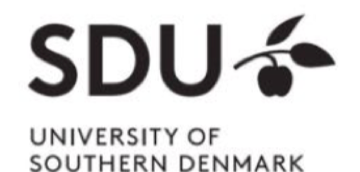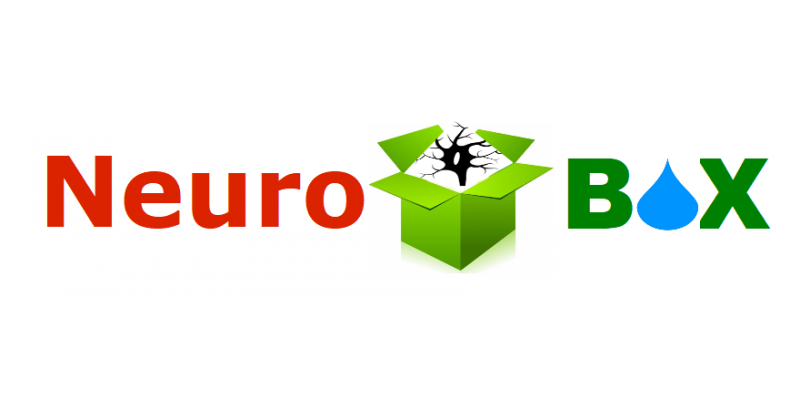

Home > Projects

Projects
EU H2020 project “ERGO”, EU tender project “iFEDT”, Effect-Net, Neurobox, EUTOX, MIWA,
Endocrine disruptors
EndocRine Guideline Optimisation - Breaking down the wall between human health and environmental testing of endocrine disrupters:
ERGO is part of a cluster of 8 research projects from the Call ‘New Testing and Screening Methods to Identify Endocrine Disrupting Chemicals’ funded by the EU Horizon 2020 Research and Innovation programme. Each project is focusing on a different aspect of new testing and screening methods identifying EDCs. ERGO is funded with a budget of over €6 million and will run from 2019 to the end of 2023. The 16-partner strong ERGO consortium is well distributed over the world and brings together a well- balanced mix of research bodies, industry, enterprises, agencies and consultancies from Denmark, France, Czech Republic, United States, United Kingdom, Japan, Germany, Belgium and Ireland. ERGO is coordinated by the University of Southern Denmark. The Aquatic Ecology and Toxicology group of the University of Heidelberg is one of the 3 core partners of ERGO and is work package leader of WP5 in which the main in vivo experimental part for ERGO will be performed. Focus in Heidelberg is the work with fish, i.e. the model organism zebrafish (Danio rerio).
ERGO presents a new approach that will support a paradigm shift in the regulatory use of standardized test guidelines (TGs) by breaking the existing wall between mammalian and non-mammalian vertebrate testing and assessment of EDCs. The highly conserved thyroid system will be used as the “proof of concept” for this cross-vertebrate class approach. ERGO will investigate a battery of draft in vitro assays and evaluate thyroid-responsive biomarkers and endpoints (B/E) suitable for extrapolation of effects from fish and amphibian tests to humans and other mammals (and vice versa) and finally validate successful B/E for inclusion in existing in vivo or new in vitro OECD TGs. A cross-class adverse outcome pathway (AOP) network will provide the scientifically plausible and evidence-based foundation for the selection of B/E in lower vertebrate assays predictive of human health outcomes. In silico modeling and biotransformation data will support cross-vertebrate class effect extrapolation.
For more details: www.ergo-project.eu

Following the outcomes of different EU workshops and a JRC survey, the European Commission (EC) Services have initiated activities to improve the test guidelines (TGs) for detection of endocrine disrupting effects. The EC opened a tender call to get support for the development of (a) study protocol(s) for testing of identification of endocrine disrupting substances in non-mammalian vertebrates or invertebrates as indicators of effects on biotic systems, i.e. regulatory relevant endpoints for environmental hazard assessment. This project is funded with 400,000€. Based on the tender specifications, a study plan for the development of a study protocol for testing of different ED-related effects in fish was developed by the Aquatic Ecology and Toxicology Group of the University of Heidelberg, in collaboration with partners from the University of Southern Denmark and the University of Antwerp. The novel TG will be developed by enhancing already existing TGs and adding new endpoints, i.e. merging OECD TGs 229 and 234 and adding thyroid-related endpoints for fish. This takes important recommendations of the EU workshop and JRC survey into account and will result in an integrated approach for fish testing that covers reproduction, early development and sexual differentiation and will consequently provide crucial information about potential ED-related effects for regulatory purposes. This “integrated Fish Endocrine Disruptor Test” (iFEDT) could become an important standard for ED testing, as it covers all relevant life stages and the most important ED modes in fish (estrogen, androgen, steroid, thyroid). Furthermore, this approach will contribute to the 3R principle, as it has the potential to reduce, or even replace, amphibian testing for thyroid disruption. Additionally, the fact that the iFEDT will cover multiple life stages and ED mechanisms will also reduce fish testing in general, as several aspects can be investigated in a single test.



Neurotox
The research network 'Effect-Net' combines basic scientific research with approaches from social science to reduce the input of selected micropollutants (i.e., food additives and pharmaceuticals) into aquatic ecosystems. In the past, great efforts have been made to improve the quality of drinking water in Germany and to achieve good chemical and ecological conditions of surface waters. While classical influences such as phosphorus and nitrogen emissions, which have a negative impact on water quality, have been significantly reduced, the ecological status of many of our water bodies is still in poor condition. One reason for this may be the strong input of anthropogenic chemicals into the aquatic environment. The consequences of the long-term exposure of aquatic ecosystems to such micropollutants are, however, largely unclear. Therefore, the Ministry of Science of Baden-Württemberg supports the development of the scientific network 'Effect-Net' (Effect Network in Water Research) that will allow the identification, quantification and evaluation of micropollutants in aquatic systems using biological endpoints. On this basis, social scientists will develop different concepts to control consumer behavior and support environmental legislation.

The NeuroBox research cluster (methodical refinement for the evaluation of neurotoxic effects in the water cycle) consists of six partners and aims to improve existing test strategies for the determination of neurotoxic effects and to record anthropogenic trace substances and evaluate their neurotoxic potential. From a human toxicological point of view, this is of great importance because there is an increase in neurodegenerative diseases and the therapeutic options are limited. By including new toxicological endpoints as well as combining testing procedures of eco- and human toxicology, the entire water cycle can be considered, complex modes of action can be identified and health orientation values (GOW principle) can be derived.

In recent years there has been an increasing interest in switching from the “black box” animal-test systems to alternatives. Since 1981 the Organisation of Economic Co-operation and Development (OECD) has been actively working towards increasing animal welfare and with the 2013 published OECD guideline 236 this quest has taken on new dimensions. This has led to a shift in the scientific community, which is now set on finding working alternatives such as human cell responses. With this in mind, the flagship programme EU-ToxRisk started in 2016, driving mechanism-based toxicology testing and risk assessment for the 21st century. Here, a consortium of 39 international partners are aiming to fundamentally change the concept of toxicology and the current tests used, hoping to develop animal-free chemical safety tests. The new methods used in this project will involve in silico, as well as in vitro tests with human relevance, aspiring to translate post-exposure molecular mechanisms into useful information for safety testing strategies. Among the cooperating partners are experts from field such as cell biology, -omics technologies, systems biology and computational modelling, in order to fully define the functional mechanisms between a given chemical substance and their toxic effects.

Bioaccumulation
In recent years, microplastics with a diameter < 5 mm have been detected with increasing numbers in the marine and limnic environment. Due to poor biodegradation and their small size, these artificial particles can be ingested easily by aquatic organisms. A transport within the foodweb is thus a threat for the environmental health and ecological safety. Therefore, microplastic research has been growing attention in environmental pollution research. The purpose of this collaborative study MiWA (Mikroplastik im Wasserkreislauf – Probenahme, Probenbehandlung, Analytik, Vorkommen, Entfernung und Bewertung) is a comprehensive assessment of the toxicological and ecological relevance of microplastic particles as vectors for anthropogenic trace substances. The thesis will focus on the toxicological characterization of the effects of microplastic particles and selected model contaminants adsorbed to these plastic particles in planktonic organisms such as daphnia (Daphnia magna), harlequin fly (Chironomus riparius), Artemia spec. larvae and in zebrafish (Danio rerio). The spectrum of methods includes classical fish and fish embryo toxicity testing and standard molecular biological and biochemical assays as well as advanced optical techniques (confocal laser scanning microscopy). Besides artificial food chain experiments with zooplankton and zebrafish, the uptake of microplastics and adsorbed trace contaminants and associated biological effects are investigated by means of additional toxicological endpoints. This joint project is funded by the he German Federal Ministry for Education and Research (BMBF).
